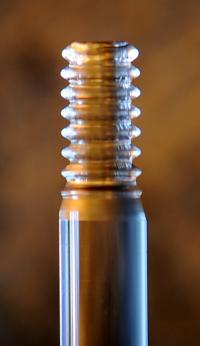Research in fields such as trace gas detection, timekeeping and others related to physics has been greatly helped by laser frequency combs in measuring the frequencies of light.
 Laser Frequency Comb
Laser Frequency Comb
Laser frequency combs are capable of operating over a wide range of frequencies, some combs are capable of operating over millions of frequencies. Laser combs have teeth that are very fine and spaced with uniform gaps. These teeth can be treated as hash markings on the scale of measurement while taking measurements of the light emitted by atoms, lasers, stars or other objects. The only drawback of these combs was their bulky size. The researchers at NIST have now designed combs that are compact in size and easy to use. With their findings the scientists have advanced the research towards developing chip-based combs, which will prove to be useful in astronomical survey applications.
The model of the new micro-comb from NIST is made up of a low-power semiconductor laser, which is the size of a shoebox, and a 2 mm wide optical cavity. Frequency combs of small size have been developed recently, but NIST was the first to come up with a high-quality optical cavity made up of silica or quartz for easy integration with other optical components. The NIST version of the frequency comb depends on the low-power laser and the optical cavity’s unique properties for the measurements. The optical cavity has been designed in such a way that it traps the light within a small space, thereby enhancing the intensity and minimise the dispersion. The spacing between the teeth of the comb is 10 to 100 times more than that of conventional combs. This spacing pattern enables easier measurement of frequency. Portable combs are extremely useful in measurements of ultrastable frequencies that are observed while searching for planets like Earth that are orbiting stars.